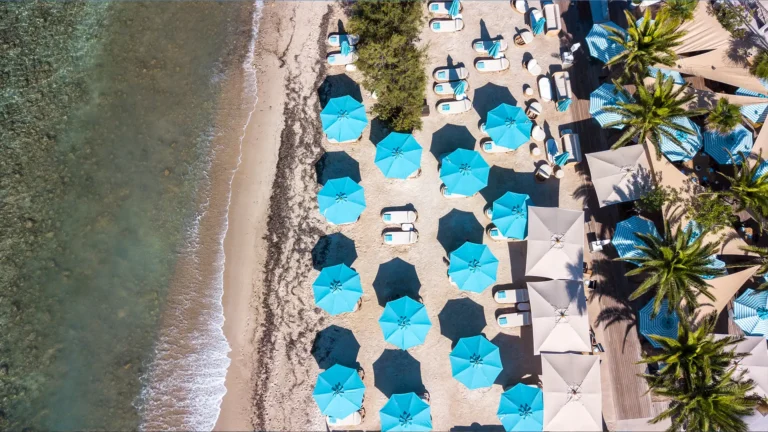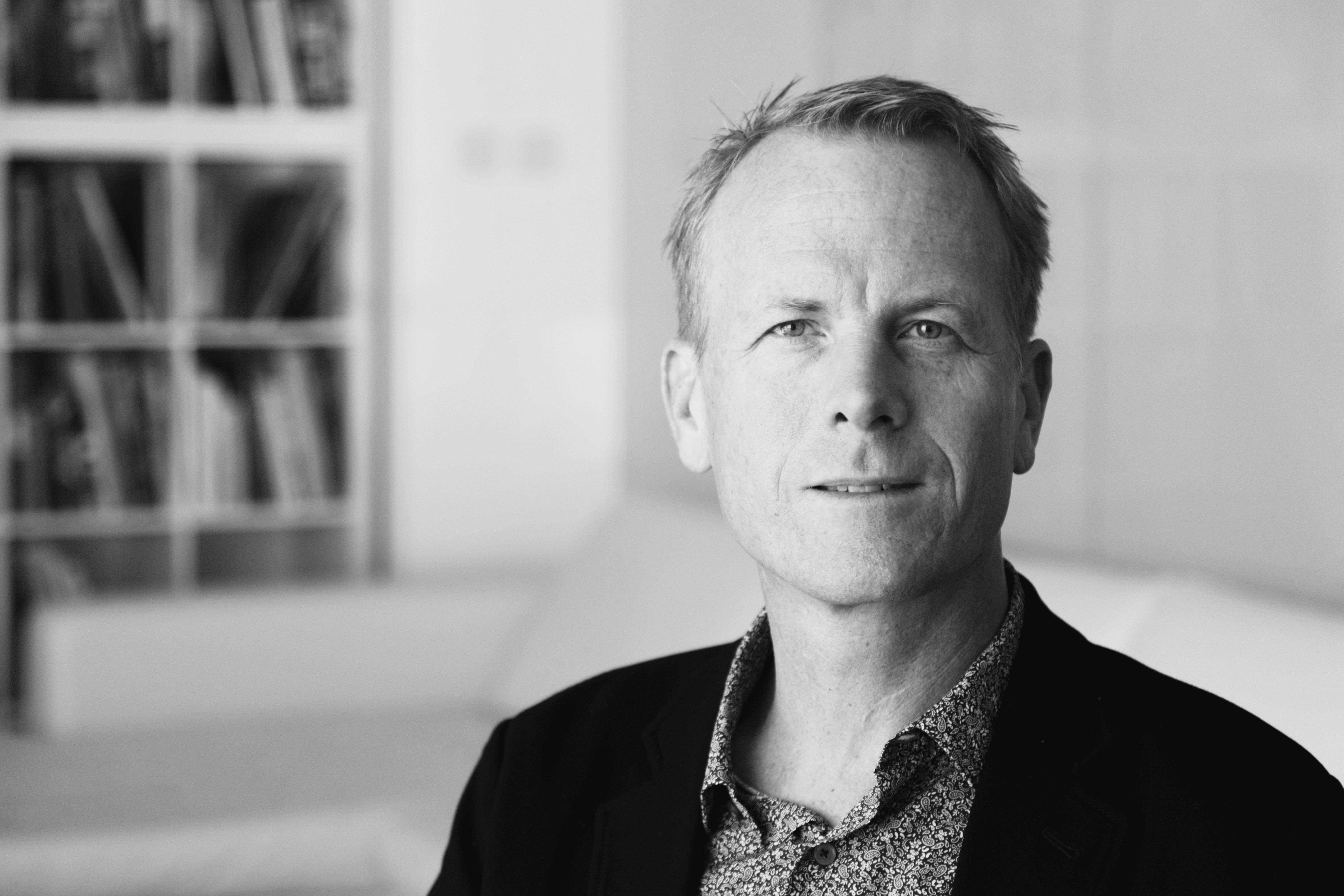
Nammos Cannes: the new beach club on La Croisette where Mykonos spirit meets French Riviera glamour.
Think Mykonos meets La Croisette: sun-drenched luxury with a cosmopolitan twist.
Jumeirah Marsa Al Arab is the subtle intervention of beauty that doesn’t shout or tries to be something that it is not. To fit into Dubai’s architecture scene, we ensured that it would remain timeless by not being overly articulated in form but rather subtle, simple and elegant – allowing it to be discovered and admired.” – Shaun Killa
Shaun Killa, the visionary architect responsible for the stunning Jumeirah Marsa Al Arab, shares insights into his creative journey in completing the esteemed Jumeirah hotel trilogy, which features the Jumeirah Beach Hotel and the renowned Jumeirah Burj Al Arab, world’s only seven-star-hotel.
Dubai, a city known for its iconic skyline and luxurious lifestyle, is about to welcome a new architectural masterpiece – Jumeirah Marsa Al Arab. Designed by the renowned architect Shaun Killa, this hotel promises to be a subtle yet stunning addition to Dubai’s architectural landscape.
Jumeirah hotels are well-known for their exceptional standards in luxury and service. They offer refined architecture, elegant interiors, and personalized guest experiences. Their focus on high-quality amenities and attention to detail makes it one of my favorite hotel chains in the luxury hospitality market.
For more details on Shaun Killa’s vision, design approach and aspirations for this new addition to the Jumeirah hotel portfolio, read the full interview below.
What was the design vision for Jumeirah Marsa Al Arab and what was your brief? How did you come up with this concept?
When we were asked to come up with a design for Jumeirah Marsa Al Arab, one of the first criteria was that it needed to complement Jumeirah Burj Al Arab. So, not only did we have to come up with a design that respected this iconic property but also one that would complete and complement the trilogy of hotels including Jumeirah Beach Hotel.
We had to first decide what story we wanted to tell through our design, so we examined the properties along the beachfront to make sure that our narrative fitted in seamlessly with the existing properties. This is where we conceptualised our design story, one that would originate at Madinat Jumeirah and end at Jumeirah Marsa Al Arab. It depicts the evolution of design, starting with Jumeirah Al Qasr and Jumeirah Mina Al Salam and their traditional architecture, moving on to Jumeirah Al Naseem’s classic design and next transitioning to modern architecture at Jumeirah Burj Al Arab and Jumeirah Beach Hotel. The design story ultimately concludes at Jumeirah Marsa Al Arab, where we look at what the future holds through futuristic yet more fluid or sinuous architecture.
With worlds ultra-yachts as the inspiration, we wanted to create the same sense of being in water through curvatures, almost like a yacht going out to sea. Previously we didn’t have the software to create double formed designs, so modern lines had curvature but were almost 2D and sharp edged. With the software and technology we have today we are able to create that fluidity with design and create double curved forms. The residence building slopes in one direction and the other curves back on itself to create a dynamic movement. It was designed to give a sense of the building moving in a direction – although stationary, the eye creates this movement.
Our next component was to ensure that the hotel allowed views through to the Jumeirah Burj Al Arab, which is why we decided to split the buildings to showcase the iconic view.

How is the hotel truly unique architecturally in your opinion? What less obvious unique design features are there?
The arch under the hotel is one of the most unique design aspects of this project. It represents the entire guest drop-off experience. Normally when guests are dropped off at a hotel they are behind the building or at best at the lobby and as they move through the building, they become more aware of where they have arrived.
We wanted to create a unique guest experience where the moment you drive up to the hotel and get dropped off, you are presented with this beautiful view where the arch opens to frame Jumeirah Burj Al Arab and the design journey begins.
Another unique area is the D-marin marina. The hotel is flat by the marina with extensive resort landscaping on either side to represent a luxury yacht heading out to sea. As I love the sea so much, I also felt that there was an opportunity to utilise the space in the marina to create a series of stunning villas. Originally the marina walls had the rock revetment on the outside, concrete on the inside and sand in the middle – which was enough for parking and a two-way road next to it. To create the perched villas, we moved the rock revetment out by 6 meters and filled it with sand to build the nine villas, creating an extension of the whole marina experience.
The penthouses at the top of the residences have a full 360-degree experience; as the design slowly peals away it presents a cascading prowl of a luxury ship and the balconies provide for the perfect view.
When we first came up with the design for the hotel, we could’ve easily combined it with the residences. However, we were very conscious that Burj Al Arab Jumeirah is such a significant icon that we did not want to block tourists from the view from the beach. We spent a tremendous amount of time taking photos from different angles and GPS positions to ensure we were giving guests and visitors the best possible viewpoint. This is why the hotel and residences are set so far apart, to allow for that viewing experience of the iconic Jumeirah Burj Al Arab.
Did you incorporate sustainable methods within the design?
We used the balconies as a shading device to the glass; the wraparound balcony experience means that the glass facades very seldom have direct sunlight on it. In doing this we reduced the heat load on the building, lowering the cooling load per sqm by up to 40%. All the mechanical and electrical systems have been specified as low energy recovery systems and work together to reduce the overall energy consumption.
What kind of avant-garde ideas or unique methods have you portrayed through Jumeirah Marsa Al Arab?
The hotel consists of a lower ground floor, a mezzanine floor, a ground floor, 16 hotel floors and a roof. The steel arch structure was created as the drop-off area for the hotel and acts as a transfer slab for the 11 floors of the hotel structure above.
The structural steel arch’s main elements are two main arches and two cross arches that are 16.5m high from the base level. At the foundation level, the steel arch is supported on two 5625mm deep pile caps that are tied with two horizontal steel boxes as tie beams at the base level. The Reinforced Cement Concrete vertical elements are planted on an internal steel truss within the arch that consists of beams and overhanging beams to support the planted concrete cores and columns. The steel arch is composed of compact box sections with different dimensions, depths, widths, and thicknesses.
The approximate total weight of the arch is around 3000 tonnes. The arch was made in segments at the fabrication yard, transported in segments and installed on temporary supports at the site. All connected to gather by site welding.
What are you most looking forward to for Jumeirah Marsa Al Arab once it’s open?
As a team we have worked tirelessly to design and construct it. The day the property opens is when you hand the project over to the guests to enjoy.
I look forward to driving up to the hotel, being dropped off and heading up to the terrace to watch the sunset and witness the guests explore and enjoy the hotel. This project is all about giving back to the guests so that they leave with lasting memories that can be shared with their loved ones.
How does Jumeirah Marsa Al Arab’s design reflect on the overall guest experience?
The building slowly reveals itself by creating surprise at the arch drop-off followed by flowing movements of the interior space. After travelling for many hours, we wanted the design to start the guest experience from the moment the chauffeur door opens, and you step outside. The F&B experiences across the hotel have also been carefully crafted to create intimacy.
If Jumeirah Marsa Al Arab was a movie set, what movie do you see being filmed there?
I would love to see a James Bond movie being filmed at Jumeirah Marsa Al Arab. The arch of the hotel with Jumeirah Burj Al Arab against a glowing sunset would make for the perfect backdrop as he pulls up in his Aston Martin.
In 5 words, how would you describe Marsa Al Arab?
Elegant – Avant-Garde – Futuristic – Emotive – Soft
More Jumeirah hotel reviews for the Jumeirah Burj Al Arab & Jumeirah Muscat Bay.
We would like to be transparent with you – you might come across some affiliate links on our website, and if you make a purchase through them, we might earn a small commission. Thank you for your support to keep this blog alive!

Think Mykonos meets La Croisette: sun-drenched luxury with a cosmopolitan twist.

For one dazzling day during the Cannes Film Festival, the Miu Miu Summer Beach Club transformed the French Riviera into a hotspot of fashion and celebrity allure.

Experience your own Perfect Moment on the slopes. With a focus on performance and statement designs, the skiwear brand’s retro-inspired and technical clothing ranges from ski suits to glossy ski jackets covered in the star motif.
| Cookie | Duration | Description |
|---|---|---|
| cookielawinfo-checkbox-analytics | 11 months | This cookie is set by GDPR Cookie Consent plugin. The cookie is used to store the user consent for the cookies in the category "Analytics". |
| cookielawinfo-checkbox-functional | 11 months | The cookie is set by GDPR cookie consent to record the user consent for the cookies in the category "Functional". |
| cookielawinfo-checkbox-necessary | 11 months | This cookie is set by GDPR Cookie Consent plugin. The cookies is used to store the user consent for the cookies in the category "Necessary". |
| cookielawinfo-checkbox-others | 11 months | This cookie is set by GDPR Cookie Consent plugin. The cookie is used to store the user consent for the cookies in the category "Other. |
| cookielawinfo-checkbox-performance | 11 months | This cookie is set by GDPR Cookie Consent plugin. The cookie is used to store the user consent for the cookies in the category "Performance". |
| viewed_cookie_policy | 11 months | The cookie is set by the GDPR Cookie Consent plugin and is used to store whether or not user has consented to the use of cookies. It does not store any personal data. |